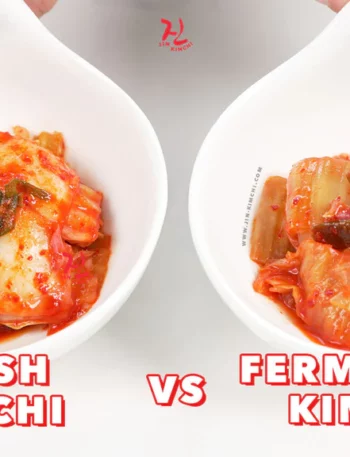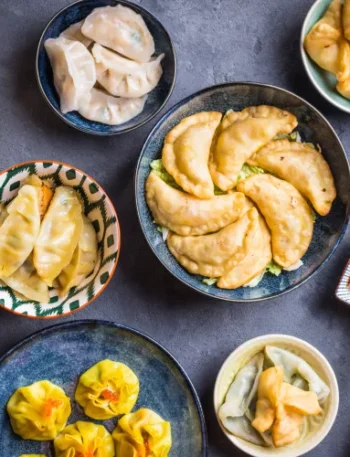
In recent years, culinary borders have blurred, leading to a dynamic fusion of flavors, techniques, and ingredients from around the world. Ethnic foods, which were once confined to specific regions, are now widely enjoyed across the globe, shaping the way we perceive and prepare food.
From Mexican spices to Japanese umami, these diverse flavors are not only changing what we eat but also influencing the very essence of modern cuisine.
Historical Context of Ethnic Foods in Globalization
The blending of ethnic foods into mainstream cuisine is not a new phenomenon. Throughout history, food has been a vehicle of cultural exchange, heavily influenced by trade, migration, and colonization. The Silk Road, for instance, brought spices, tea, and grains from Asia to Europe, and vice versa, laying the foundation for what we now call “fusion” cuisine.
With globalization, the spread of ethnic foods has accelerated. Today, people in North America can enjoy Japanese ramen, Mexican tacos, and Indian curries in the same neighborhood, thanks to this centuries-old exchange of ingredients and flavors. The accessibility of these foods has not only enriched our diets but also encouraged experimentation, giving rise to what we know as modern cuisine.

Key Ethnic Cuisines Influencing Modern Dishes
Mexican Cuisine
Mexican food has taken the world by storm, with its robust flavors, fresh ingredients, and vibrant dishes. Tacos, burritos, and quesadillas have become globally popular, and spices like chili, cumin, and coriander have found a place in kitchens worldwide. Mexican cuisine emphasizes a mix of textures and flavors that combine earthy and spicy notes, influencing chefs to experiment with spices in non-traditional ways.
Example: The taco, once a humble street food, has been reimagined in countless ways, from Korean BBQ tacos to vegan plant-based versions, highlighting its versatility and global appeal.
Japanese Cuisine
Japanese food, known for its simplicity and umami-rich flavors, has left a lasting mark on modern dining. Sushi, tempura, and ramen are just a few dishes that have become staples around the world. Japanese cooking techniques and the emphasis on presentation have influenced contemporary chefs to focus on balance, aesthetic appeal, and subtle flavors in their creations.
“The Japanese philosophy of ‘ichi-go ichi-e’ — appreciating each unique moment — has inspired chefs to elevate dining into an art form, mindful of each ingredient’s quality and seasonality.”
Indian Cuisine
The bold spices and complex flavors of Indian cuisine have deeply influenced the global food scene. Ingredients like turmeric, ginger, cardamom, and cumin are now common in households beyond South Asia. Indian food also introduced the world to diverse vegetarian dishes, aligning with the rising popularity of plant-based diets in recent years.
Mediterranean Cuisine
Mediterranean cuisine, with its focus on fresh vegetables, lean proteins, and olive oil, has set the standard for healthy eating. Studies show that Mediterranean diets support cardiovascular health, thanks to their balance of fats, proteins, and fiber. As a result, Mediterranean-inspired dishes have become a model for healthy, balanced meals worldwide.
Fusion Cuisine
Fusion cuisine embodies the integration of diverse culinary traditions, blending elements from different ethnic backgrounds to create new dishes. The popularity of fusion dishes like sushi burritos, Korean BBQ tacos, and Italian-Japanese fusion pasta reflects the widespread influence of ethnic foods on contemporary cuisine.
Fusion cuisine not only celebrates diversity but also sparks creativity, encouraging chefs and home cooks to experiment and break culinary boundaries.
Influence of Ethnic Ingredients on Modern Cooking Techniques
Ethnic ingredients are increasingly popular in mainstream cooking, expanding both flavor and technique. Ingredients like turmeric, which has anti-inflammatory properties, and avocado, a staple of Mexican cuisine, are now essential to many diets worldwide. These ingredients allow chefs to incorporate traditional cooking methods, such as grilling, pickling, and fermenting, to add depth and richness to their dishes.
Popular Ingredients:
- Turmeric: Known for its bright color and health benefits, turmeric is widely used in smoothies, teas, and curries.
- Miso: This Japanese staple adds umami and depth to broths and marinades.
- Sriracha: Originally from Thailand, this spicy sauce has become a global condiment, featured in everything from sandwiches to sushi rolls.
The Role of Technology and Social Media in Spreading Ethnic Foods
Social media platforms like Instagram and YouTube have accelerated the spread of ethnic foods, allowing chefs, influencers, and enthusiasts to share their favorite dishes and recipes with a global audience. The popularity of food delivery apps has also increased accessibility, enabling people to try various ethnic dishes with ease.
“Social media has turned food into a shared cultural experience, breaking down barriers and allowing people to experience global flavors in the comfort of their homes.”
Health and Sustainability Trends in Ethnic Cuisine
The rise of health-conscious eating has highlighted ethnic foods, many of which are inherently nutritious and plant-based. For example, the Mediterranean diet’s emphasis on vegetables and olive oil is widely recognized as heart-healthy, while Japanese cuisine’s focus on fish and seaweed offers a wealth of nutrients.
Sustainability and Plant-Based Diets
Ethnic cuisines, such as those from India and Southeast Asia, often incorporate plant-based meals, reducing reliance on meat and dairy. This focus aligns with current sustainability goals, as plant-based diets have a lower environmental impact.
Challenges and Considerations
While ethnic foods enrich modern cuisine, there are considerations to keep in mind, including cultural appropriation. It’s essential to respect the origins of these dishes and ensure that the cultural significance is maintained. Chefs and food enthusiasts alike should seek to understand the stories and techniques behind ethnic foods, preserving authenticity even when innovating.
While ethnic foods enrich our culinary experiences, it’s important to honor their cultural roots and approach fusion cooking with respect and authenticity.
Ethnic foods have transformed modern cuisine by introducing new flavors, ingredients, and cooking techniques. From street foods to high-end dining, these influences have encouraged a more diverse, innovative, and interconnected culinary world. By embracing the diverse heritage of ethnic foods, we can enjoy a richer dining experience while respecting the roots of these treasured dishes.
As we continue to explore new foods and techniques, let’s approach ethnic cuisines with respect and curiosity, celebrating the unique cultural elements they bring to the table. After all, the beauty of food lies in its power to connect us, bridging cultures and bringing people together one dish at a time.









